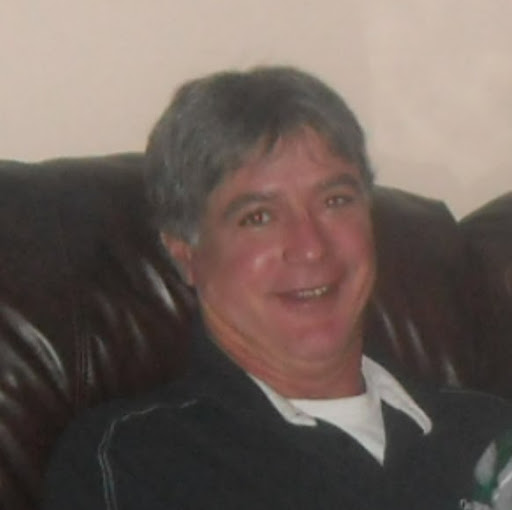John J Ricciardelli
age ~43
from Wethersfield, CT
- Also known as:
-
- John J Ricciardilli
- Jo Ricciardelli
John Ricciardelli Phones & Addresses
- Wethersfield, CT
- 12-17 Forest Glen Cir, Middletown, CT 06457 • 860 788-3135
- 6-11 Forest Glen Cir, Middletown, CT 06457 • 860 788-3135
- 7 Four Winds Dr, Poughkeepsie, NY 12603 • 845 462-0503
- San Diego, CA
- 84 Hillsdale Ave, Wethersfield, CT 06109
Name / Title
Company / Classification
Phones & Addresses
President, Treasurer
Desert Spring Consultants Inc
8629 Jasper Wood St, Henderson, NV 89074
3943 Mt Albertine Way, San Diego, CA 92111
3943 Mt Albertine Way, San Diego, CA 92111
President
SENTE BELLA
Beauty Salons
Beauty Salons
220 W G St, San Diego, CA 92111
619 235-6865
619 235-6865
President
JR CONTRACTING INC
3943 Mt Albertine Way, San Diego, CA 92111
Us Patents
-
Electrostatic Gating
view source -
US Patent:7188934, Mar 13, 2007
-
Filed:Oct 7, 2004
-
Appl. No.:10/960599
-
Inventors:Meng H. Lean - Santa Clara CA, US
John J. Ricciardelli - Poughkeepsie NY, US
Osman T. Polatkan - N. Haledon NJ, US
Michael J. Savino - Tappan NY, US
Armin R. Völkel - Mountain View CA, US -
Assignee:Xerox Corporation - Stamford CT
-
International Classification:B41J 2/06
-
US Classification:347 55, 347 56
-
Abstract:Various systems and techniques are disclosed for stopping, selectively controlling, and optimizing a flow of particles in a flowing stream. The systems and techniques utilize a multi-electrode assembly and various voltage waveforms applied to those electrodes. The particles flow past or near the electrode assembly and their flow is controlled by the configuration and arrangement of the electrodes and the voltage waveforms applied thereto. An additional strategy for countering particle leakage flow is also described.
-
Control Electrode For Rapid Initiation And Termination Of Particle Flow
view source -
US Patent:7204583, Apr 17, 2007
-
Filed:Oct 7, 2004
-
Appl. No.:10/960593
-
Inventors:Meng H. Lean - Santa Clara CA, US
John J. Ricciardelli - Poughkeepsie NY, US
Osman T. Polatkan - N. Haledon NJ, US
Michael J. Savino - Tappan NY, US -
Assignee:Xerox Corporation - Stamford CT
-
International Classification:B41J 2/04
-
US Classification:347 54, 347 55
-
Abstract:An electrostatic gating assembly utilizing at least three electrodes is disclosed. The assembly is particularly well suited for controlled administration of small particles.
-
Conductive Bi-Layer Intermediate Transfer Belt For Zero Image Blooming In Field Assisted Ink Jet Printing
view source -
US Patent:7204584, Apr 17, 2007
-
Filed:Oct 1, 2004
-
Appl. No.:10/954207
-
Inventors:Meng H. Lean - Santa Clara CA, US
John J. Ricciardelli - Poughkeepsie NY, US
Fred R. Stolfi - Shrub Oak NY, US
Osman T. Polatkan - North Haledon NJ, US
Michael J. Savino - Tappan NY, US -
Assignee:Xerox Corporation - Stamford CT
-
International Classification:B41J 2/06
-
US Classification:347 55
-
Abstract:A transfer belt apparatus, system and method are provided to prevent image blooming. For example, an ink jet printing apparatus may include a grounded print head, a counter-electrode opposite the ground print head, and a bi-layer transfer belt provided between a print head and a counter-electrode and at least partially supported by two or more transfer bias rollers. A method may include applying a voltage between a print head and a counter-electrode to accelerate ink drops coming out of the print head toward a transfer belt, and evacuating charge accumulated on the transfer belt with a time constant smaller than a drop ejection frequency of the print head.
-
System For Transporting And Selectively Sorting Particles And Method Of Using The Same
view source -
US Patent:7217901, May 15, 2007
-
Filed:Jul 2, 2003
-
Appl. No.:10/612122
-
Inventors:Meng H. Lean - Santa Clara CA, US
John J. Ricciardelli - Poughkeepsie NY, US
Osman Todd Polatkan - North Haledon NJ, US
Michael J. Savino - Tappan NY, US
Eric Peeters - Fremont CA, US
Scott Elrod - La Honda CA, US -
Assignee:Xerox Corporation - Stamford CT
-
International Classification:B03C 7/00
-
US Classification:2091271, 209 1, 209 121, 209131
-
Abstract:A system for transporting and selectively sorting particles includes a first wall and a traveling wave grid extending along the first wall. The system includes a second wall having a passage extending therethrough and a gate operatively associated with the passage. A controller is adapted to output a multi-phase electrical signal. The controller is in communication with the traveling wave grid and the gate. A method of using the system is also provided.
-
Reservoir Systems For Administering Multiple Populations Of Particles
view source -
US Patent:7293862, Nov 13, 2007
-
Filed:Oct 29, 2004
-
Appl. No.:10/977216
-
Inventors:Meng H. Lean - Santa Clara CA, US
Osman T. Polatkan - N. Haledon NJ, US
John J. Ricciardelli - Poughkeepsie NY, US
Michael J. Savino - Tappan NY, US -
Assignee:Xerox Corporation - Stamford CT
-
International Classification:B41J 2/175
B41J 2/06 -
US Classification:347 85, 347 55
-
Abstract:Various particle reservoir systems such as used in printing systems are described which utilize one or more traveling wave grids within a reservoir to selectively transport particles to a reservoir exit. The traveling wave grids serve to transport the particles by use of moving electrostatic fields that travel across the grids. The reservoir systems are adapted for use with a variety of print head configurations.
-
System For Transporting And Selectively Sorting Particles And Method Of Using The Same
view source -
US Patent:7304258, Dec 4, 2007
-
Filed:Apr 2, 2007
-
Appl. No.:11/731971
-
Inventors:Meng H. Lean - Santa Clara CA, US
John J. Ricciardelli - Poughkeepsie NY, US
Osman Todd Polatkan - North Haledon NJ, US
Michael J. Savino - Tappan NY, US
Eric Peeters - Fremont CA, US
Scott Elrod - La Honda CA, US -
Assignee:Xerox Corporation - Norwalk CT
-
International Classification:B03C 7/00
-
US Classification:2091271, 209 1, 209 121, 209131, 204643
-
Abstract:A system for transporting and selectively sorting particles includes a first wall and a traveling wave grid extending along the first wall. The system includes a second wall having a passage extending therethrough and a gate operatively associated with the passage. A controller is adapted to output a multi-phase electrical signal. The controller is in communication with the traveling wave grid and the gate. A method of using the system is also provided.
-
Continuous Particle Transport And Reservoir System
view source -
US Patent:8020975, Sep 20, 2011
-
Filed:Jun 28, 2005
-
Appl. No.:11/167951
-
Inventors:Meng H. Lean - Santa Clara CA, US
John J. Ricciardelli - Poughkeepsie NY, US
Michael J. Savino - Tappan NY, US
Osman T. Polatkan - North Haledon NJ, US
Fred R. Stolfi - Shrub Oak NY, US
Eric Lindale - Kennett Square PA, US -
Assignee:Xerox Corporation - Norwalk CT
-
International Classification:B41J 2/02
B41J 2/215
B41J 2/18
B41J 2/17
B41J 2/415 -
US Classification:347 73, 347 83, 347 89, 347 97, 347120
-
Abstract:Various configurations and applications of traveling wave grids are disclosed. Systems for transporting particles to feed apertures, and/or for transporting particles from storage reservoirs are described. The systems are particularly useful for transporting toner particles in printing systems.
-
Capacitive Based Sensing System For Use In A Printing System
view source -
US Patent:56897634, Nov 18, 1997
-
Filed:Sep 16, 1996
-
Appl. No.:8/715268
-
Inventors:Darrel R. Rathbun - Ontario NY
John J. Ricciardelli - Poughkeepsie NY
Gerald A. Domoto - Briarcliff Manor NY -
Assignee:Xerox Corporation - Stamford
-
International Classification:G03G 1506
-
US Classification:399 53
-
Abstract:A sensing system for a print development system of a printing system in which a print is developed with developer material and development of the print varies as a function of both a first parameter and a second parameter is provided. The development system includes a capacitance and the sensing system, which measures a first value varying as a function of the first parameter and a second value varying as a function of the second parameter, includes a sensing subsystem for measuring an output by reference to the capacitance; and a signal development subsystem, responsive to the sensing system, for developing, from the output, both a first signal and a second signal with the first signal corresponding to the first value and the second signal corresponding to the second value.
Resumes

John Ricciardelli
view source
John Ricciardelli
view sourceYoutube

John M Ricciardelli
view source
John Ricciardelli
view source
John Ricciardelli
view source
John Ricciardelli
view source
John Ricciardelli
view sourceMyspace
Googleplus

John Ricciardelli
Work:
G.e - Inspector
Relationship:
Married
About:
Fan of all Boston pro sports. Love my family and love to golf.
Bragging Rights:
Only one in the history of my golf course to have a hole in one on all four par threes

John Ricciardelli
Get Report for John J Ricciardelli from Wethersfield, CT, age ~43







